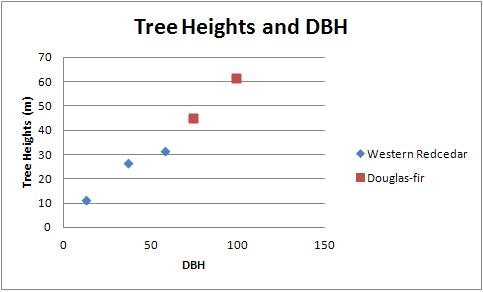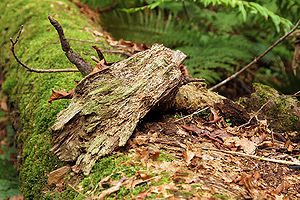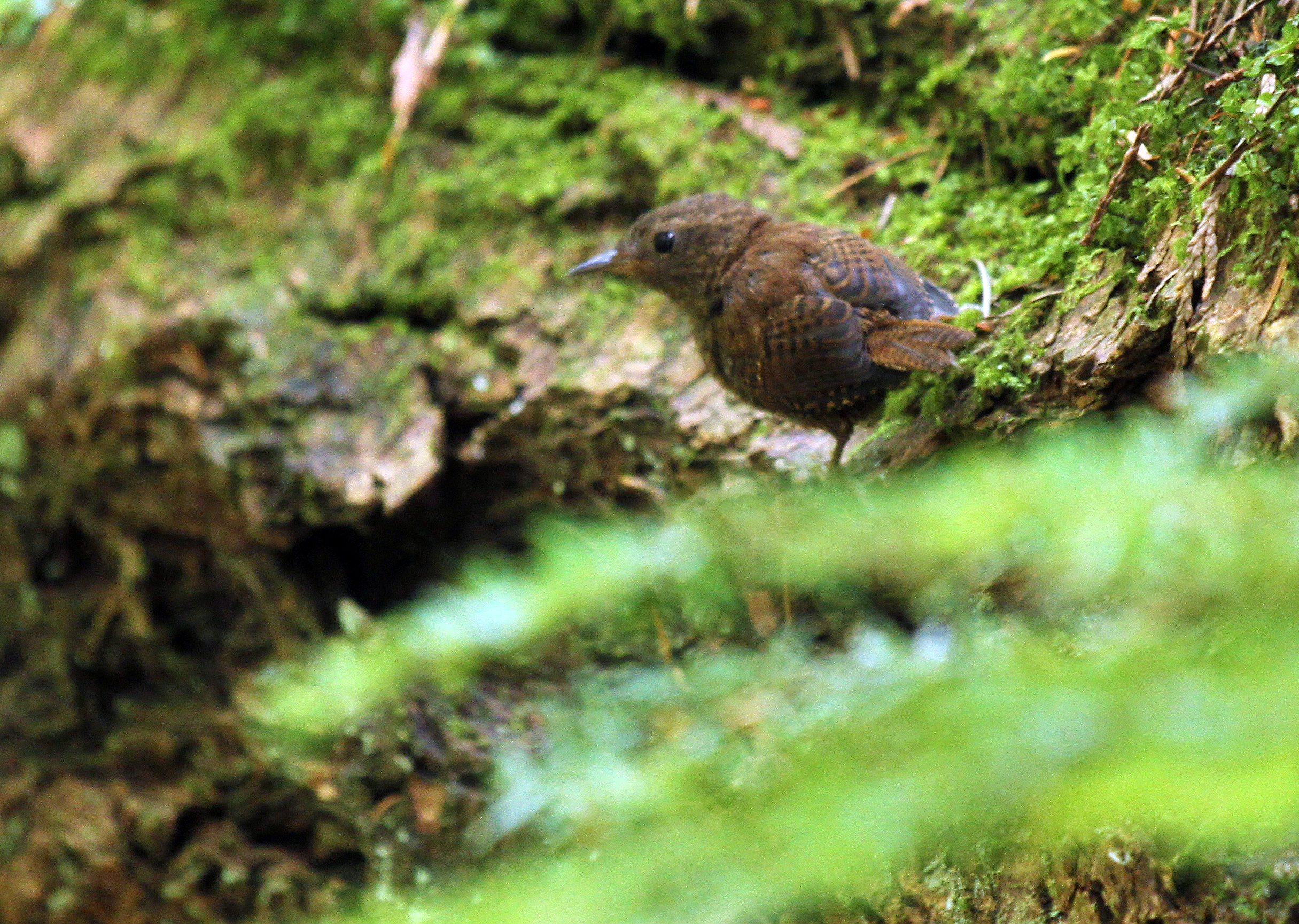CFS: Second-growth Forest with Root Disease
History
Dating back to 1865, Point Grey was harvested by Vancouver Island Spar, Lumber and Sawmill Company (later Hastings Sawmill Company). The giant Douglas-fir and western redcedar that once dominated this area were felled by cross-cut saw and axe as the loggers stood on narrow spring boards.1 Because of the butt-swell and butt-rot at the bottom of these large old-growth trees, the trees were cut several metres above the ground, leaving large stumps. Can you see any nearby?
The central portion of the UBC campus was cleared in 1912, and there was a major wildfire in 1919 that burned 200 hectares of remnant forest. The stands then naturally regenerated with a mix of native species.
General
Elevation: 97 m above sea level
Aspect: Southwest
Canopy Cover: 94 %
Major Tree Species by Volume: Douglas-fir (Fd)
Minor Tree Species by Volume: Western redcedar (Cw)
Average Height of Trees: 40 m
Site Series: 04 Fd-Sword fern
Tree Layers
This is a mature stand with a mix of conifer and deciduous trees. There are large overstory Douglas-fir, mid-canopy redcedar, bigleaf maple and red alder, and redcedar saplings. There are expanding canopy gaps where overstory Douglas-fir are dying from root disease. Although these giant firs are susceptible to the laminated root disease, they still manage to grow to heights of over 60 m!
Wildlife Trees and Large Woody Debris
As you walk along the agroforestry trail you might start to notice more gaps in the canopy due to fallen or standing dead trees. These dead trees are mainly Douglas-firs that have succumed to laminated root rot caused by the fungal pathogen Phellinus sulphurascens. Phellinus mostly affects Douglas-fir and hemlock, redcedar is considered resistant and hardwoods are immune to it. Can you see evidence of wildlife activity in the large dead conifers? Have any of them blown over? What do their roots look like?
The signs and syptoms of Phellinus are the crowns of trees yellow or thinning, distress of cones, red brown stained heartwood and separation between trees rings (as seen in the picture below).
Wildlife
This area is full of life as the standing dead trees act and a cornucopia for insects and birds. Pileated woodpeckers leave their markings as they look for bugs to eat deep in the decaying wood. Amphibians and other creatures like the moist and shaded environment of the fallen trees and upturned root-balls. Keep your eye out for the Pacific wren spotted here on some fallen tree. Click on the Play button to hear the incredible song of this tiny bird.
Critical Thinking
Looking around this area, do you notice variation in the amount and composition of understory vegetation? As canopy cover thickens, the vegetation below can change from shade-tolerant to shade-intolerant species. Can you tell which species need the sun more than others?
Taking a closer look for laminated root rot in the roots of an overturned tree. How does this root disease affect the stability of the tree? The tree's ability to take up water and nutrients?
How far do you think the root disease extends from the canopy gaps?





